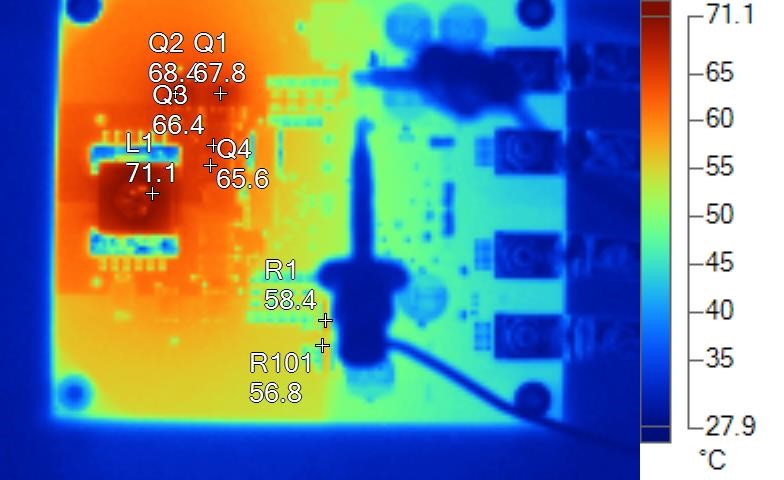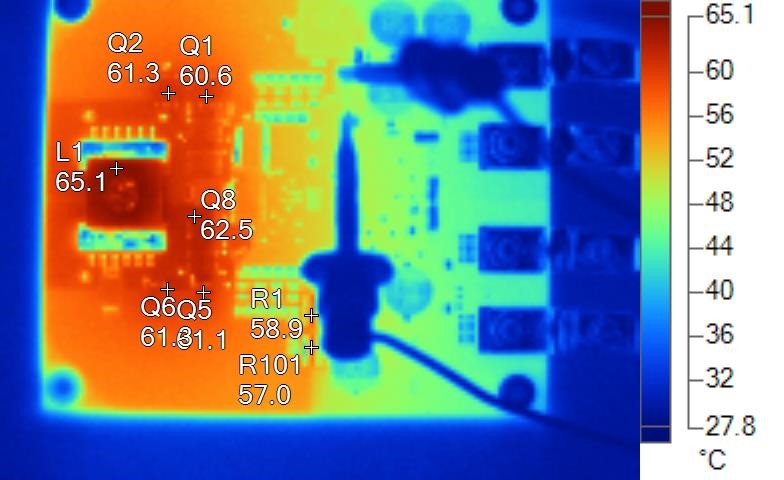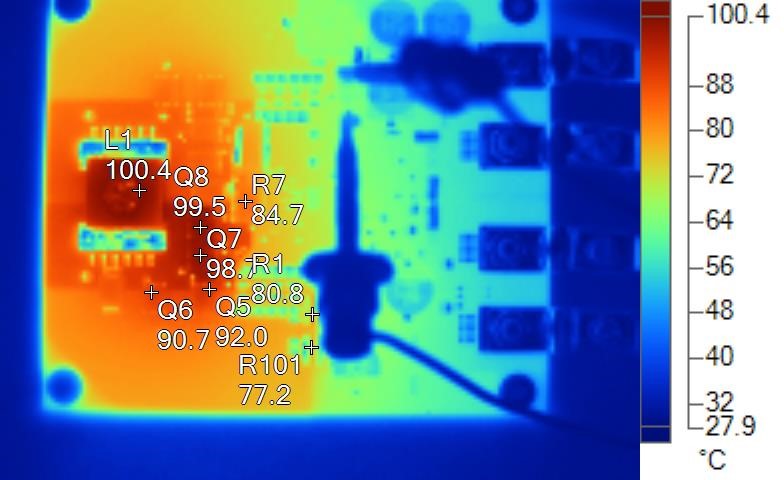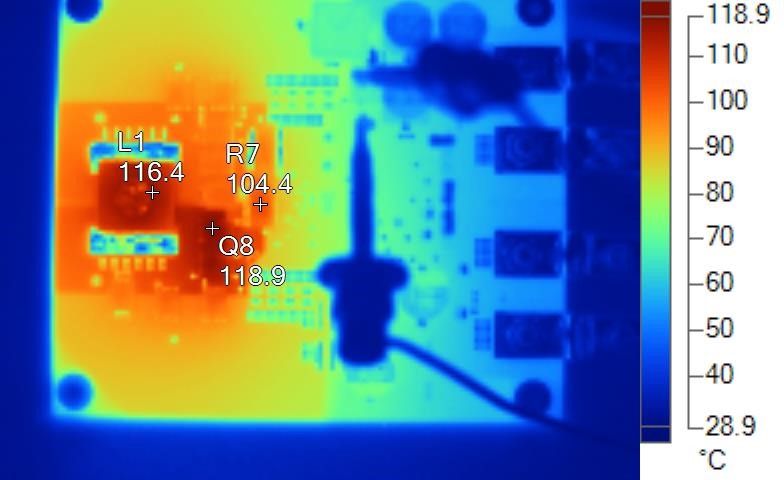TIDT262 April 2022
- Description
- Features
- Applications
- 1Test Prerequisites
-
2Testing and
Results
- 2.1 Efficiency Graphs
- 2.2 Load Regulation
- 2.3 Line Regulation
- 2.4
Thermal Images
- 2.4.1
Further Extensive Thermal
Measurements
- 2.4.1.1
No Forced Cooling
- 2.4.1.1.1 Thermal Images 4.5 VIN and 20 AOUT
- 2.4.1.1.2 Thermal Image 5.5 VIN and 20 AOUT
- 2.4.1.1.3 Thermal Image 7 VIN and 25 AOUT
- 2.4.1.1.4 Thermal Image 9 VIN and 30 AOUT
- 2.4.1.1.5 Thermal Image 12 VIN and 30 AOUT
- 2.4.1.1.6 Thermal Image 15 VIN and 30 AOUT
- 2.4.1.1.7 Thermal Image 13.8 VIN and 30 AOUT
- 2.4.1.2 Forced Cooling
- 2.4.1.1
No Forced Cooling
- 2.4.1
Further Extensive Thermal
Measurements
- 2.5 Bode Plots
- 3Waveforms
2.4 Thermal Images
The following photos show the thermal images for this reference design.
 Figure 2-6 16-V Input Voltage and 30-A
Output Current
Figure 2-6 16-V Input Voltage and 30-A
Output Current| Name | Temperature |
|---|---|
|
L1 |
71.1°C |
|
Q1 |
67.8°C |
|
Q2 |
68.4°C |
|
Q3 |
66.4°C |
|
Q4 |
65.6°C |
|
R1 |
58.4°C |
|
R101 |
56.8°C |
 Figure 2-7 12-V Input Voltage and 30-A
Output Current
Figure 2-7 12-V Input Voltage and 30-A
Output Current| Name | Temperature |
|---|---|
|
L1 |
65.1°C |
|
Q1 |
60.6°C |
|
Q2 |
61.3°C |
|
Q5 |
61.1°C |
|
Q6 |
61.3°C |
|
Q8 |
62.5°C |
|
R1 |
58.9°C |
|
R101 |
57.0°C |
 Figure 2-8 9-V Input Voltage and 30-A
Output Current
Figure 2-8 9-V Input Voltage and 30-A
Output Current| Name | Temperature |
|---|---|
|
L1 |
100.4°C |
|
Q5 |
92.0°C |
|
Q6 |
90.7°C |
|
Q7 |
98.7°C |
|
Q8 |
99.5°C |
|
R1 |
80.8°C |
|
R101 |
77.2°C |
|
R7 |
84.7°C |
 Figure 2-9 5.5-V Input Voltage and 20-A
Output Current (After Around 3 minutes)
Figure 2-9 5.5-V Input Voltage and 20-A
Output Current (After Around 3 minutes)| Name | Temperature |
|---|---|
|
Q8 |
118.9°C |
|
L1 |
116.4°C |
|
R7 |
104.4°C |